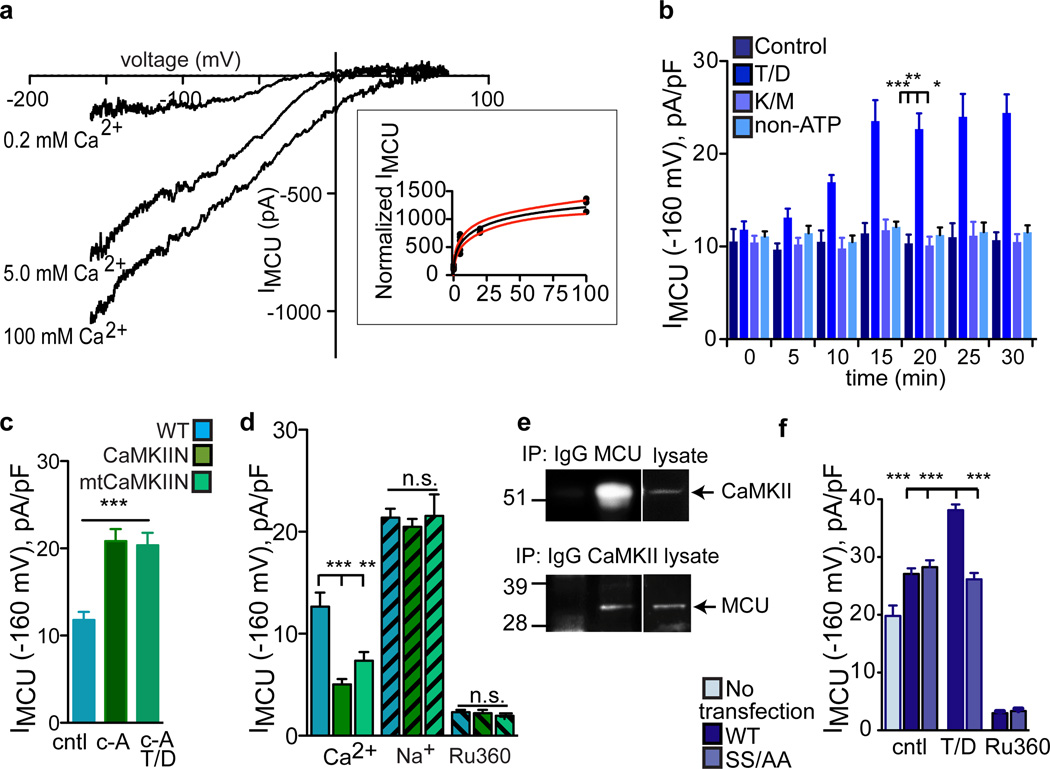Figure 2.
CaMKII agonist actions on IMCU require serines 57 and 92. a. IMCU is a Ca2+-dependent conductance. Inset shows IMCU in 0.2, 5 and 100 mM bath [Ca2+] fit with the Hill equation (standard slope). V½ = 23.8 mM, R2= 0.955 and h = 0.057. Red lines show the 95% confidence intervals (runs test p = 0.743). b. Summary data and time course for IMCU recorded with 0.2 mM Ca2+ after obtaining a high resistance seal and mitoplast membrane rupture (time 0) allowing dialysis of CaMKII T/D. Replacing ATP with non-hydrolyzable ATP (non-ATP) analog (both at 0.1 mM) does not allow a CaMKII-dependent increase in IMCU (all mutant CaMKII at 0.5 µM); T/D and ATP; T/D non-ATP; kinase inactive CaMKII (K/M), CaM and ATP, n = 6 (WT), 7 (T/D), 6 (K/M) and 5 (non-ATP), *p < 0.01, **p < 0.001, ***p < 0.0001 at 20 min. c. Summary data for IMCU recorded with 0.2 mM Ca2+ after addition of 100 nM calyculin A (c-A); c-A with T/D CaMKII (0.5 µM), ATP. n = 7 (control), 9 (C-a) and 7 (C-a with T/D), *p < 0.0001. d. Summary data for IMCU from WT, CaMKIIN and mtCaMKIIN mitochondria. Na+ current (150 mM) recorded in the absence of bath (intermembrane space equivalent) Ca2+ or Ru360 (10 nM). **p < 0.001, ***p < 0.0001, n = 7 (cntl groups), 8 (T/D, WT), 9 (T/D, SS/AA) and 6 (Ru360 groups). e. MCU and CaMKII co-immunoprecipitate from mitochondrial lysate. f. Summary data for IMCU recorded from HEK cell mitoplasts with and without transfection of WT or SS/AA MCU mutants. HEK mitoplast Ca+ currents were inhibited by Ru360 (10 nM). For Ca2+ n = 10 (WT and CaMKIIN) and 7 (mtCaMKIIN); Na+ n = 15 (WT), 13 (CaMKIIN) and 12 (mtCaMKIIN) and for Ru360 n = 8 (WT and CaMKIIN), 5 (mtCaMKIIN), ***p < 0.0001. Data represent mean ± s.e.m, except for inset (see a).

